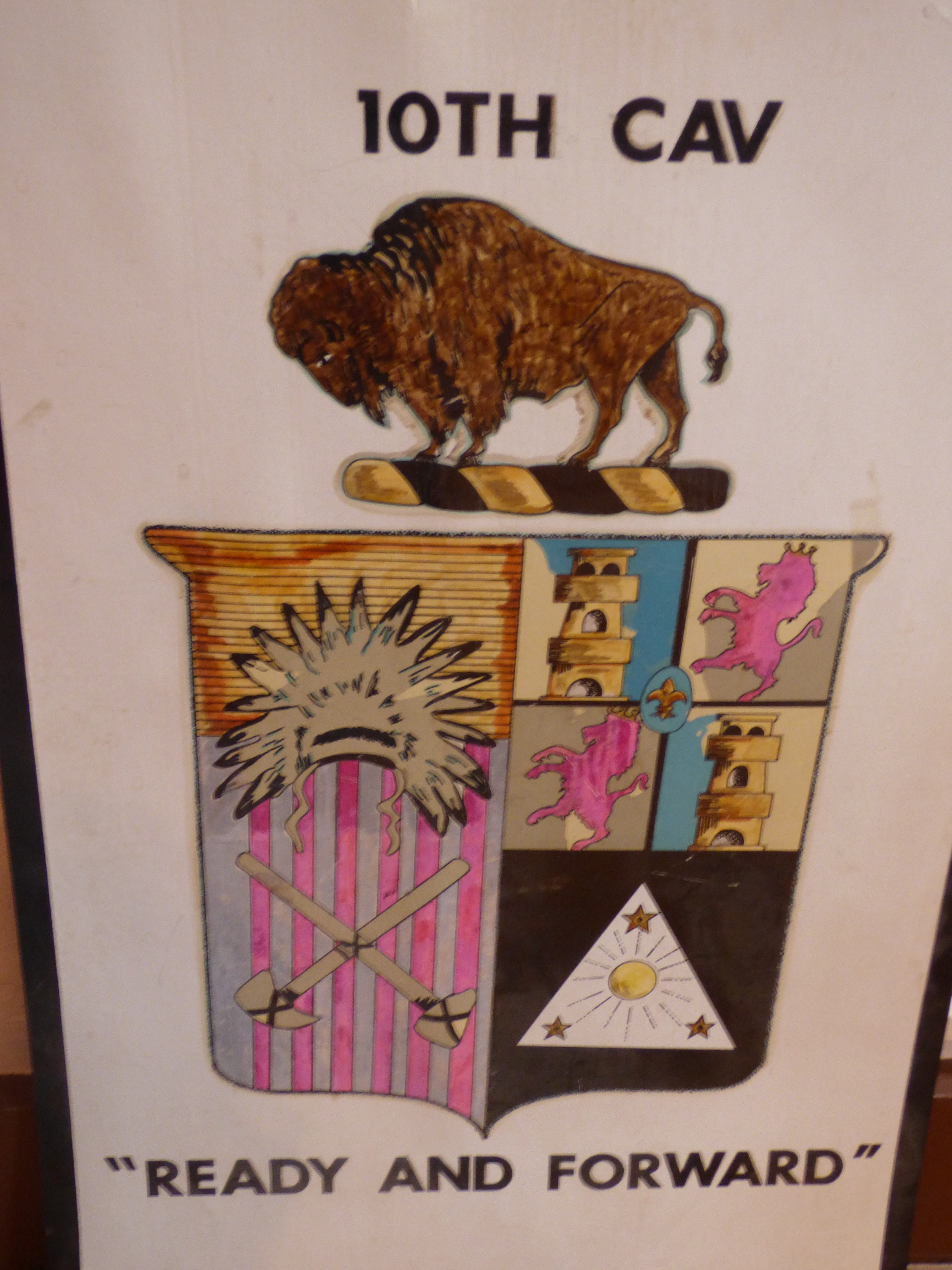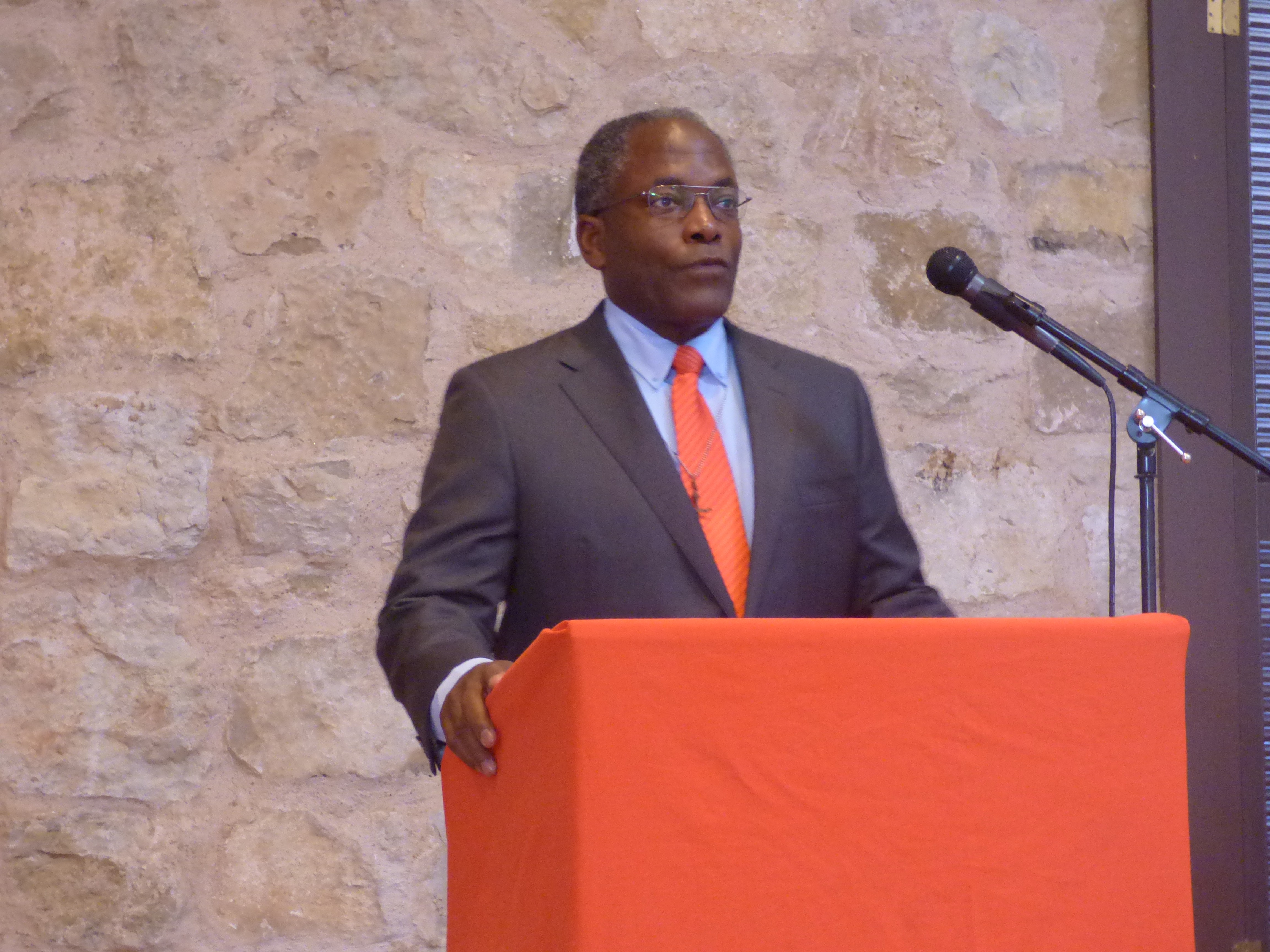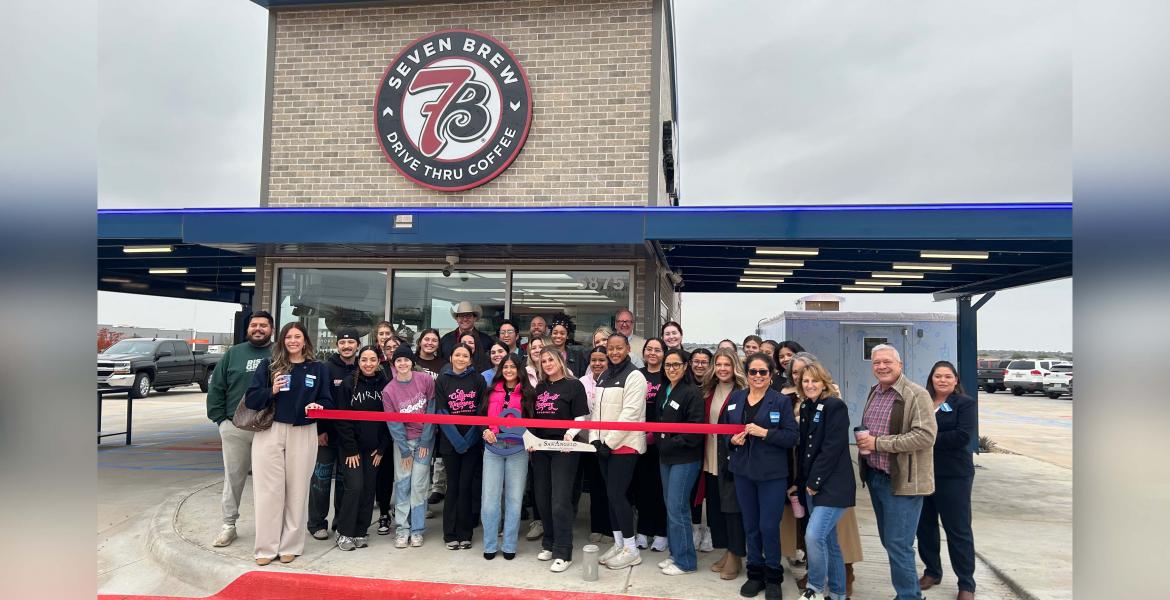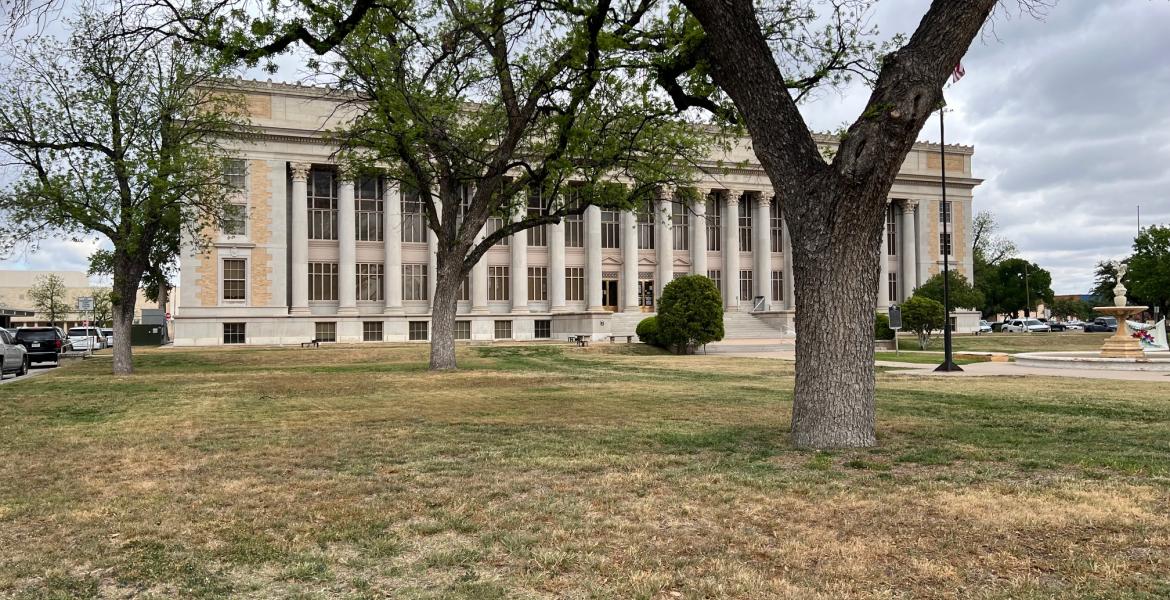On Sunday afternoon, Feb. 28, 2016, San Angelo's Fort Concho hosted its annual Buffalo Soldier Heritage Day. This year also marks the 150th anniversary of the Buffalo Soldier. Many people have heard of them, but Sunday was an extremely informative gathering with some very special guests.
The ceremony took place at the National Historic Landmark Commissary at Avenue C and Burgess Street. Just a block north is Henry O Flipper Street, named after an American soldier, former slave, and the first black man to graduate from West Point in 1877 at age 21. He was the first non-white officer to lead Buffalo Soldiers of the 10th Cavalry, reporting to Fort Concho in October 1877 and assigned to A Troop.
The day's commencement opened with Calvary members, in full uniform, posting the colors. As they carried the Texas and United States flags, in Honor Guard form, to the front of the room, spectators stood in awe and respect. The Pledge of Allegiance was recited by all and then the soldiers made their descent.

Music played over the loudspeaker and a mime appeared front and center. His expressions and movements portrayed the words of a popular Gospel song full of heartache, despair, hope, and redemption. The crowd responded with a standing ovation.
Robert Bluthardt, site manager for Fort Concho NHL, welcomed guests, saying it was a "joy to see such a big crowd for our Annual Buffalo Soldiers Day program." He also thanked First Sgt. Richard Brown and Sgt. Paul Cook for organizing the activity; their families for having prepared and provided food for all; and the Fort Concho membership who helped fund it. He then introduced the keynote speaker Lt. General Ronnie D Hawkins Jr.
Hawkins is an highly educated and decorated military man involved in many assignments critical to our national security. His grandfather, Charlie Hawkins, was also a Buffalo Soldier of the 10th Cavalry, and the majority of his family members also have, or are currently, serving. He said his grandmother told him stories of his grandfather's many experiences. He stressed there are three facets relating to how the soldiers of past and present serve: excellence, endurance and eminence. In her stories, his grandmother stressed how his grandfather wanted to do his job with as much "excellence" as possible.

"When you think about the minorities serving today, their endurance is carried on in many ways as the Buffalo Soldiers," Hawkins said.
Hawkins added that he doubts, in the 1880s, this group of men and women realized what impact they were going to have centuries later.
"It is a deep taproot from what the Buffalo Soldiers have done in our history, which will live long through generations to come because of the history," said Hawkins. "We have the greatest military because of the God that we believe in and the volunteers who serve today."
Sgt. Cook, who helped organize the event with First Sgt. Brown, represents Company A of the 10th Calvary. Cook has been a staff worker at Fort Concho for 12 years, primarily in the stable area. He added his interest started when he "picked up a magazine and started reading about the Buffalo Soldiers and Fort Concho." He has now been an active participant in the program for about 26 years. He said he has about 4-7 guys he can get to go with him regularly for events, but it's all about time people are willing to donate, as they are all volunteers.

"This very same walkway and the buildings are the original places these soldiers walked 150 years ago, and our job is to tell the story and teach the public about the significance of the Buffalo Soldiers," stated Sgt. Cook. He added that anyone with an interest in history, especially students, should consider joining as volunteers.
Chauncey Conell, 30, said he got involved with the Buffalo Soldiers through his Uncle Paul and has been taking part on and off for around seven years.
"I work for the school district, so I volunteer when I have time," Conell said.
Conell's great grandfather was a sergeant in the military, and although he himself never joined, he still feels a closeness in service by taking part in these events. When asked if his own son showed an interest in being involved, he smiled and said, "He marched with me in a parade in the past, but at 14, I can only hope."
In regards to spirituality back then, Sgt. Brown said religion has played a very big role because one chaplain was assigned to every black regiment. Along with the chaplains, "other duties," including teaching them "morality." The chaplain also taught them to read and write.

"How could these men have done anything without God's divinity and their faith?" asked Brown. "The Civil War was ugly times, but once the laws were changed, all the black man wanted to do was be considered part of the nation. They were now considered Americans, and by joining the military, they could make $13 a month, travel, and if they served three years, were promised 150 acres of land. The mentality was 'I've been in bondage and now I belong.' They wore the U.S. logo with great pride, and did exactly what they promised to do: serve their country as a volunteer and defend other Americans."
Brown added, "Not once in my military career, never, did I question who was in charge. It doesn't make any difference who my Commander in Chief [is], we're not supposed to be at each other; we [are] to do what the country needs, and we need to do it together."
To conclude the event, RosieLeetta Reed provided a memorable presentation. She is one of five people awarded the Jacqueline Kennedy Onassis Award for the American Institute for Public Service. She has also received multiple awards and has dedicated much of her life to mentoring disadvantaged youth. However, her focus Sunday was on relaying one particular major historical story concerning Buffalo Soldiers. Her "Living History Program" included the story of a 16-year-old girl named Cathy who was the only documented female Buffalo Soldier. Getting into character with her introduction, Reed turned her back to the crowd and said, "I must do this in first person." For the next 30 minutes, the crowd sat silently mesmerized as she took on the persona of "William Cathey."
Reed said," Martha was my mother, and my father a freeman. At 4 years old, I started tending to the Master's home. One day, someone came to the door yelling 'the Yankees are coming!' I had no idea what a Yankee was, but one week later, the plantation was burned and we were taken as contraband. We were forced to go and board a steamboat to Mississippi and then onto New Orleans." Reed, as Cathy said she saw a short man who was barking orders and wasn't quite sure who he was, but everyone seemed to respect him. The girls were separated and put on a wagon. Soon, she was introduced to her first stove and thought it was strange as she was used to cooking over fire. As she grew, she became a cook that wore a dress. Eventually, she outgrew her dress and they gave her a pair of "union britches." She loved the freedom of wearing pants.
Eventually, Cathy became friends with Union soldiers, so she joined as William Cathey and passed the physical exam because the doctor only checked her teeth to make sure she could load a black keg powder gun. She spent two years as a soldier before her superior officers noticed her a female. Because she had already served two years, they wouldn't court-martial her, or they would have to admit their own oversight. Cathy's captain sent her "away" and gave her an honorable discharge with a partial pension award, but she died before she could collect it.

Reed said there is a filmed documentary on Cathy, also known as William Cathey, and when it's completed, the Fort will receive a copy. She added that she's going to "tell the autobiography of Cathy from the black side," as there is a book, but "the author spelled her name wrong and only said what he felt people should know."
Reed noted that she's been doing programs for 25 years and is a descendant of a Buffalo Soldier. She took over for her grandmother and her granddaughter will take over for her.
"Ninety-six people in my family have, or are serving in the military with the same goal: they must take care of their country," Reed stated.
Also, stationed outside the event were Fort Concho Curator and Adjunct ASU History Professor Cory Robinson and two of his protégés. Mason Lemons, 15, is from Water Valley and J.D.Corbett, 18, attends Wall high School. Both teens enjoy volunteering and have a great interest in History as a post secondary education. They also have a vast knowledge in antique firearms, as well as the Buffalo Soldiers' timeline. Robinson and the young "soldiers" proudly showed off their display of a two-man tent, and explained how, back then, the soldiers were allowed to carry so many items and weight. Robinson explained the Calvary rode the horses and the Infantry walked everywhere. For a two-man set up, each man basically carried half of the tent supplies and construction. Like Sgt. Cook, Robinson also encourages volunteers and enjoys educating the public as well.
Robert Bluthardt said Fort Concho is looking into having another event here in San Angelo on July 28, 2016 on the actual 150th anniversary of the Buffalo Soldiers since congress passed the law to add the soldiers. For more information, call Paul Cook, Fort Concho Staff, at (325) 657-4440.
Subscribe to the LIVE! Daily
Required






Post a comment to this article here: